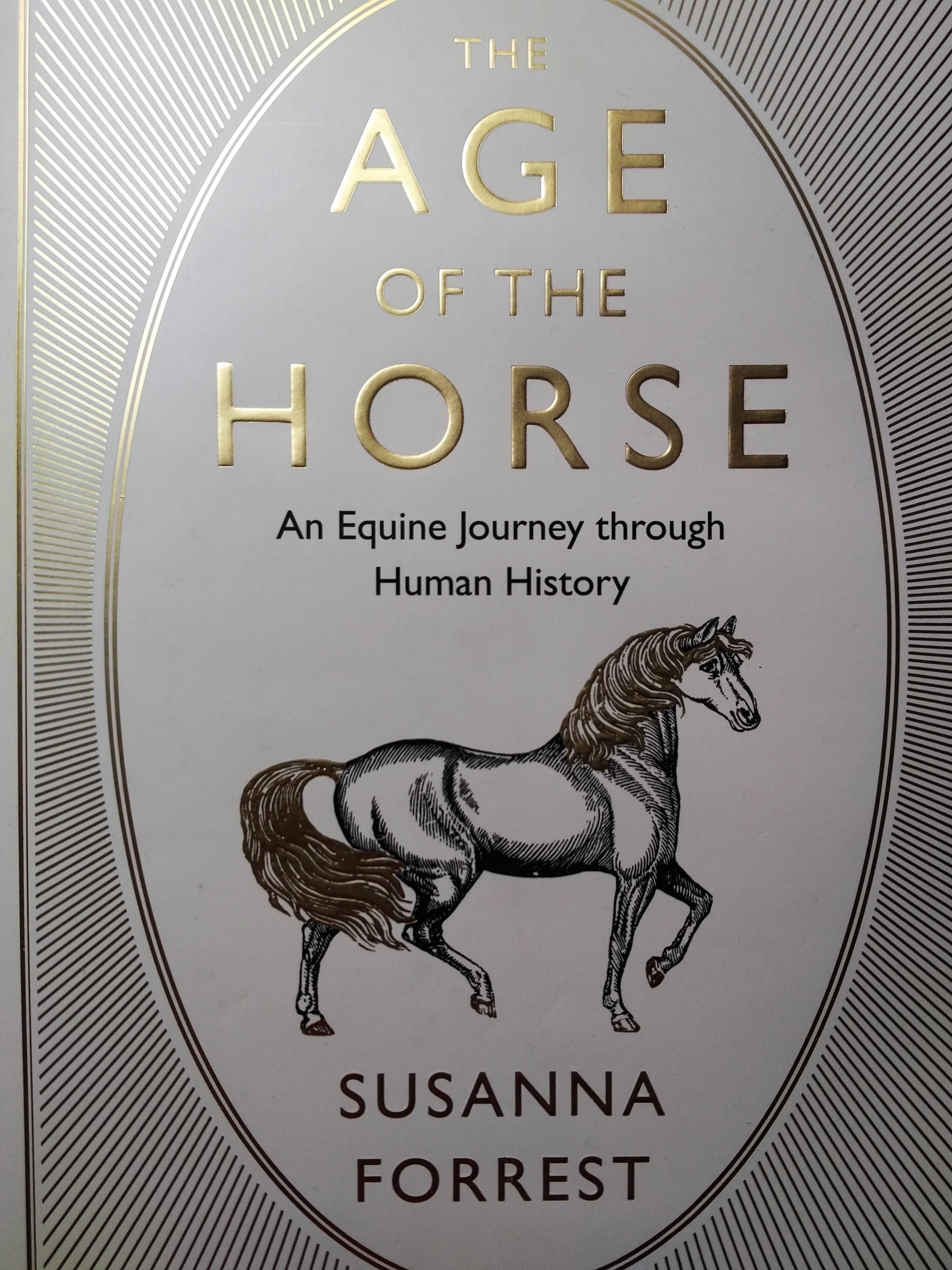Susanna Forrest’s book “The Age of the Horse. An Equine Journey through Human History ” takes us through the history of man’s relationship with the horse. She divides the book up into eight chapters, each chapter dealing with a different aspect of the horse and its shared history with humans.
- EVOLUTION This is a very short chapter that briefly outlines the evolution of the horse from the ‘zero horse’ 56 million years ago to the Equus caballus of more modern times.
- DOMESTICATION This is another short chapter on the evidence that has been found of horses and humans in the Copper Age.
- WILDNESS This chapter follows the history of wild horses and domestic horses across Europe. It also includes Forrest’s trip to Mongolia to observe the Takhi horses in the wild. I could have done with less travelogue from Forrest about the travel experience in Mongolia and more about the Takhi. She does give some interesting history about their place in Mongolian history and how they have been returned to the wild.
- CULTURE This chapter focuses on the history and development of the horse in theatrical presentations and hippodrama as well as modern presentations in Versailles.
- POWER I found this a very interesting chapter. Forrest gives us a fascinating bit of history of the heavy horse being imported into India as a gift to Ranjit Singh, the first Maharajah of the Punjab, from the British King, William IV, in 1831. This chapter goes on to give us a detailed look into a 24 hour period in London in the days when horses were the only source of transport: cab horses, vanners, carriage horses, coal horses, Shires and Clydesdales. The chapter finishes with a detailed look at the heavy horses used in agricultural work in the modern world and a movement gaining strength in the USA to use the work horse as an alternative to machines.
- MEAT This is a difficult chapter for anyone who cares about horses. In the USA there are no more slaughter houses so horses are transported for slaughter to Canada or Mexico. It is grim and disheartening as this is the side of humans’ relationship with horses that reveals the lack of respect with which horses are still treated today. There is and always will be a market for horsemeat. Forrest reveals the seamy side of how that horse meat is procured.
- WEALTH Forrest coins the term Equus luxuriosus for the horses that are the visible sign of wealth China. In China today one of the best ways you can show how wealthy you are is to have horses. Not just any horse but an expensive, imported, European, well bred , Warmblood horse.
- WAR Horses have a long history of being used in war by humans. Forest follows some of this history and then seems to get somewhat sidetracked into a recounting the bullfights in Portugal today. I could really have done without this. Especially her detailing the gore and dismemberment she saw on You Tube videos of these bullfights in which horses met a ghastly death. I am unclear how this relates to war but Forrest seems to think it does. This final chapter concludes with Forrest’s visit to the Caisson Platoon Equine Assisted Program or CPEAP. This program is proof of the value of horses as therapists to those wounded in body and mind by war. Forrest is very clear in expressing her opinion about how she feels the veterans of modern wars have been treated when they return home.It is in the Caisson Platoon program that Forrest can find the connecting line through all of her horse-human exploration.
I found this to be a well researched book literally brimming with information. However I did find the format a bit disjointed. So for me it was not as enjoyable a read as I had hoped it would be. Nonetheless, that is just my personal taste, and this book is still well worth reading if you are interested in the history and development of horse human relationships.


Leave a Reply